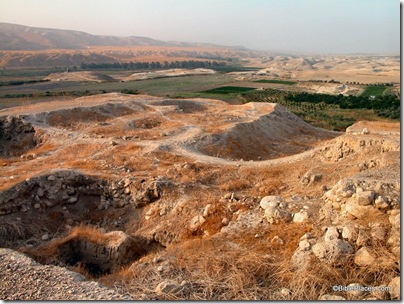Daily Mail has a report and photos of the stunning model of Herod’s Temple Mount being constructed by Alec Garrard. At 30 years and counting, Garrard has worked longer on his model than Herod did on the original (at the time of his death).
Sunday’s Zaman has a review of the “Top 10 Museums” in Turkey. Most, but not all, of the museums are related to the ancient world. HT: Explorator.
Dr. Platypus (Darrell Pursiful) has posted the Biblical Studies Carnival XXXIX. As always, the carnival is a great way to see what is going on in the wider blogosphere.
John Walton posts on what the Bible means in its description of “the land flowing with milk and honey.”
Arabia meets America in the Wild Wadi Water Park.
